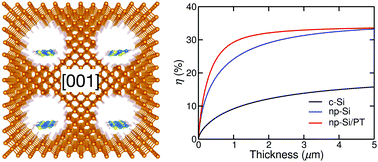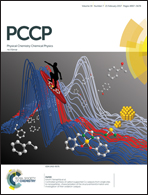Enhanced photovoltaic performance of polymer-filled nanoporous Si hybrid structures
Abstract
We propose a novel hybrid structure for improving the efficiency of crystalline silicon solar cells. By employing first-principles calculations, we demonstrate that ordered, nanoporous silicon (np-Si), when filled with polythiophene (PT) inside the pores, exhibits a substantially enhanced absorption coefficient compared to both np-Si and the bulk, which makes the np-Si/PT heterojunction a superior light absorbing material. In addition, the PT-filled porous structure forms a staggered gap, or type II, heterojunction at the interfaces, where the valence band maximum and conduction band minimum of the composite reside on PT and np-Si, respectively. Moreover, the pore-filling polymer brings about a highly dispersive valence band, which provides a major pathway for hole transport. These results suggest that such a hybrid structure, which may be easier to scale up than nanowire-based approaches, will efficiently dissociate photo-induced electron–hole pairs and reduce the amount of material for light absorption, thus leading to a cost-effective and high-performance solar cell.



 Please wait while we load your content...
Please wait while we load your content...